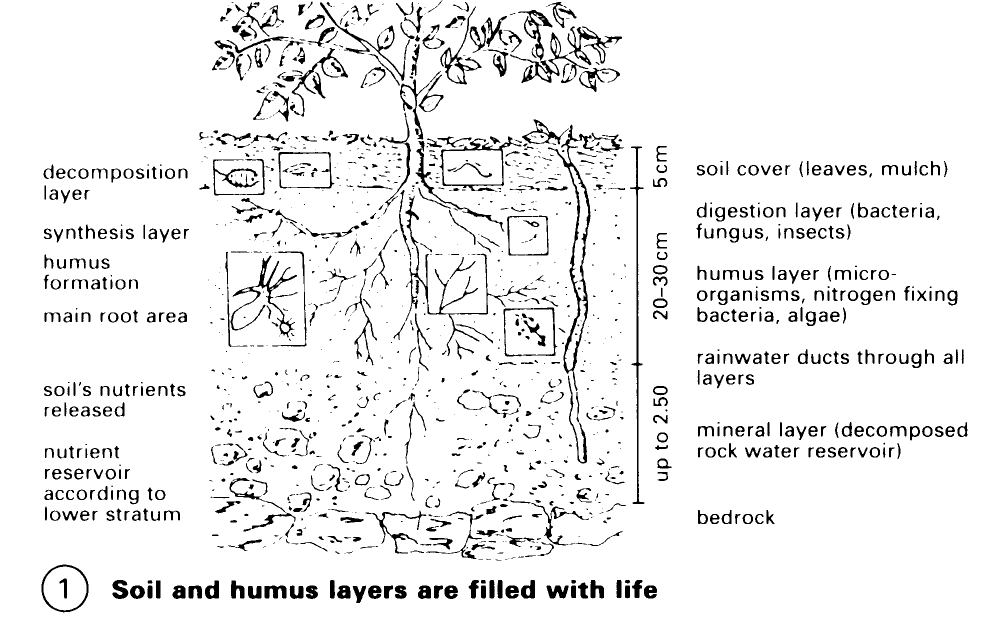Gardens: Trees and Hedges. Garden Ponds
Fertile soil contains an abundance of life, with the different layers being inhabited by different groups of species (1). Tree roots can penetrate the soil down to rocky layers and the shape of the underground root network is usually a mirror image of the shape of the tree's crown (2).


For cultivated trees the cup shape is preferred. These have open centres from which the branches are drawn outwards so that light can penetrate the treetops. Side branches are kept short so they will not break under the weight of fruit or snow.
The best time for planting fruit trees is late autumn (October in areas with early frost, November and in milder areas). Grafting points, which can be clearly recognised as a swelling on the end of the stem, must always be above the soil surface. Supporting posts must be a handbreadth away from the trunk and should be to the south to prevent sunburn (7).

When planting hedges the correct distance from the neighbouring plot must be maintained: 0.25m for hedges up to 1.2m high, 0.5m for hedges up to 2m high and 0.75m for hedges over 2 m. Hedges are ideal for providing privacy in one's own garden as well as protection from noise and dust. They also reduce wind speed, increase dew formation, regulate heat and prevent soil erosion. Banked hedges (so- called 'quick-set hedges' – (10)) are used as windbreaks in coastal areas.

Garden Ponds. Careful consideration needs to be given as to how best to integrate a pond into the garden. To begin with, selecting the correct position is extremely important for the wellbeing of the plants and animals in and around the pond. For instance, the majority of bog and water plants require plenty of sunlight (about 4-6 hours per day). The pond also needs to be easy to view so the best position is in the proximity of a terrace or a seating area, where it can be observed at leisure.
In addition, the constituent elements of the pond need to be carefully planned. If the correct proportions of plants, water and sand are used, a biological balance can be achieved within 6-8 weeks, at which time the water becomes clear. One of the most important factors in this is to have the correct ratio of water surface to water volume (a pond average of around 4001 per m2 of water surface is recommended). The garden pond will then become a habitat for both insects and plants.
The planting of the pond is done before the water is carefully topped up to its final level. The pond edge and surrounds need to be specially designed: bog and flood water zones, as well as moist beds, - (1) + (2) help to expand the pond area and create a more natural balance. The pond should be sized according to the area of the garden: a water area of 20-25 m2 is ideal, although even 3-5 m2 gives enough room for many types of plants. Generous shallow water zones of 50-200 mm depth and a deep area of at least 600mm in depth are necessary for the survival of aquatic insects and larvae during the winter months. The deep areas also provide a place of hiding for all of the pond inhabitants.


The pond should be kept full throughout the winter to reduce the possibility of it being forced out of the ground or tilted by the action of ground frost.
Fish, frogs and other amphibians will only survive the winter if the pond is protected from freezing over completely for extended periods so an ice preventer or a heating stone should be used.
Prefabricated ponds provide planting shelves at appropriate depths and these prevent gravel and planting soil from slumping or sliding away completely – (2).
Date added: 2023-01-05; views: 553;
